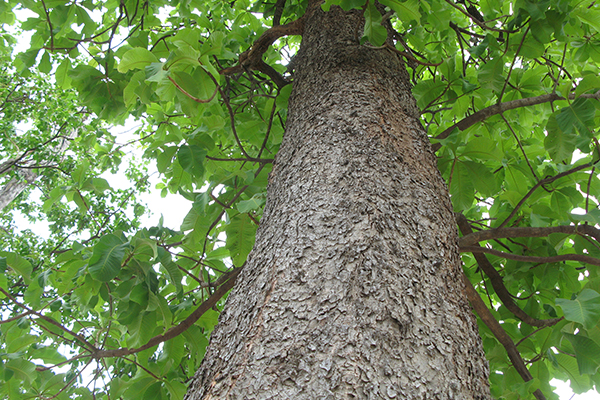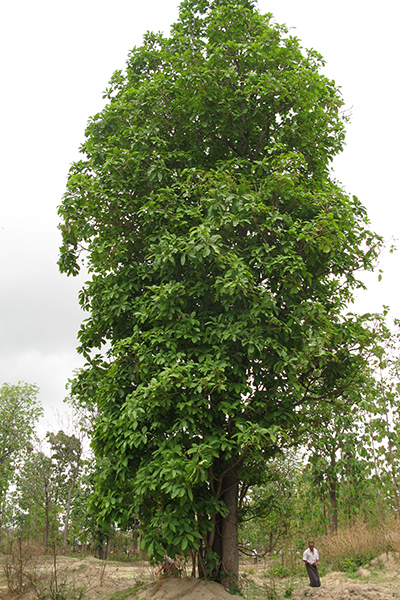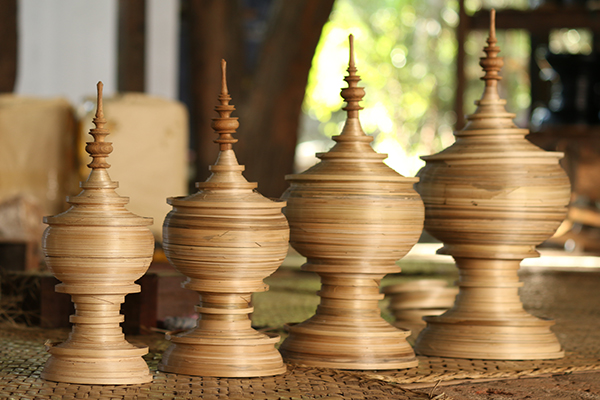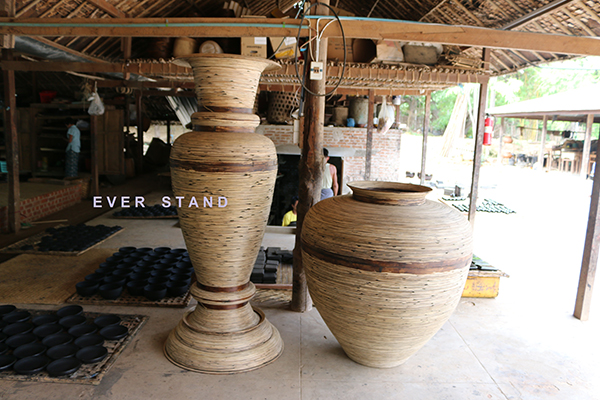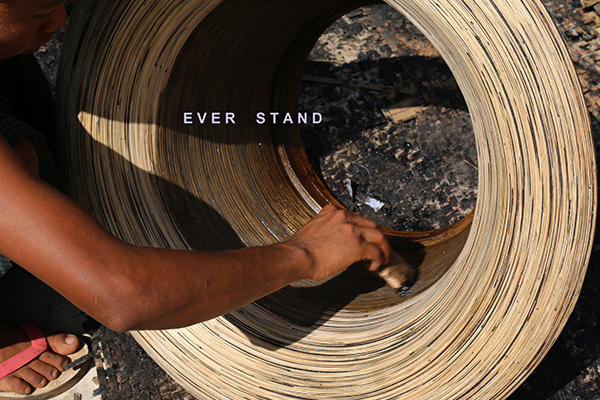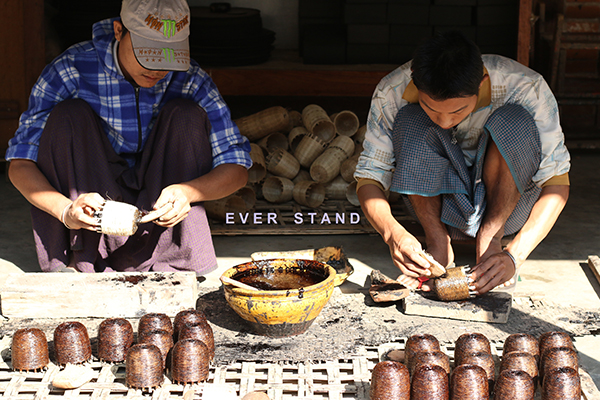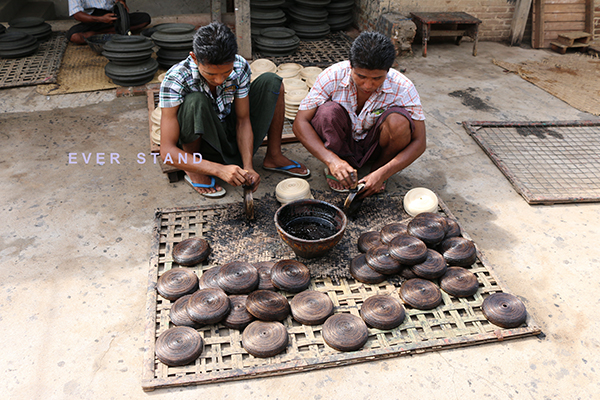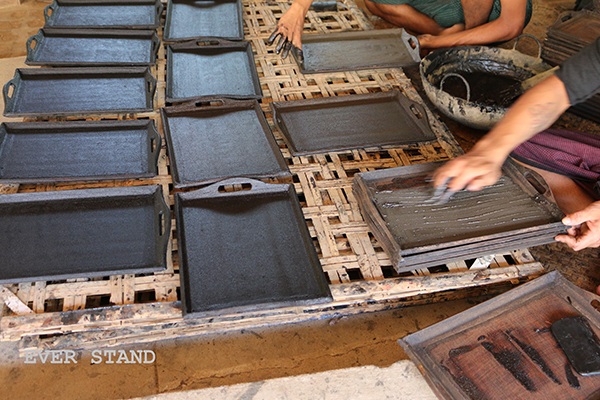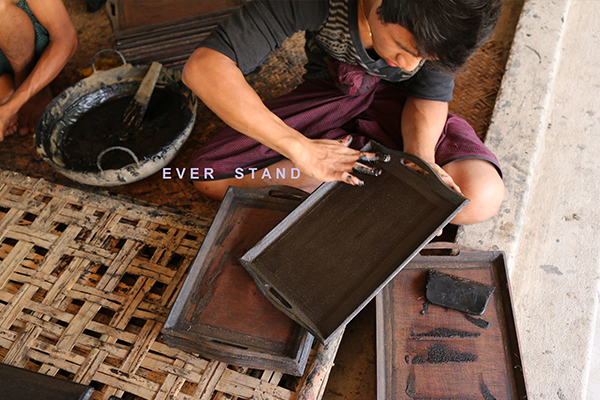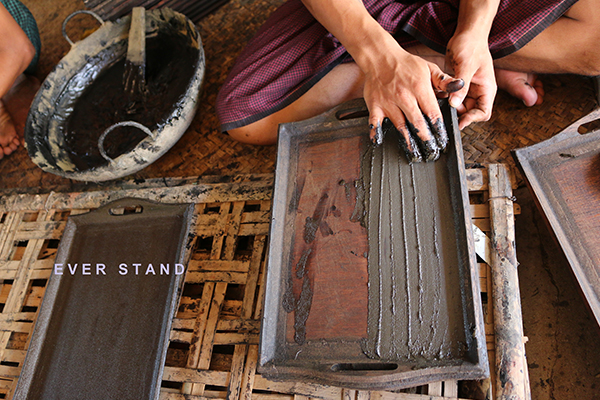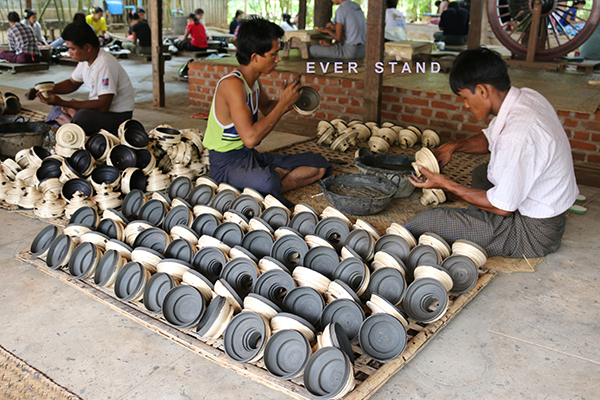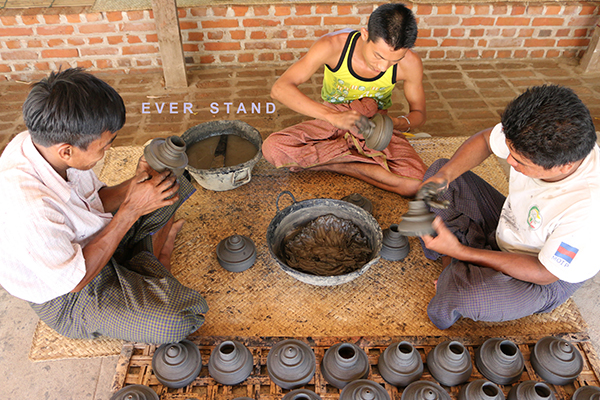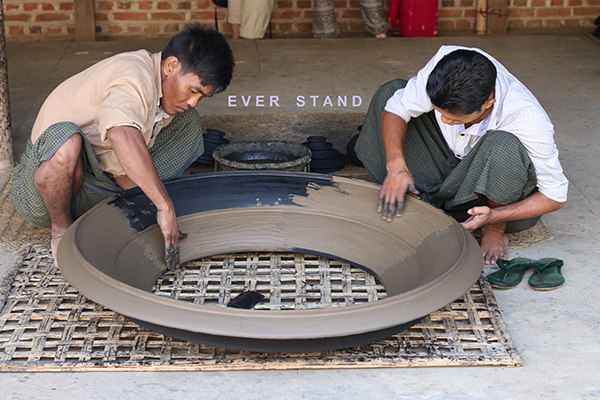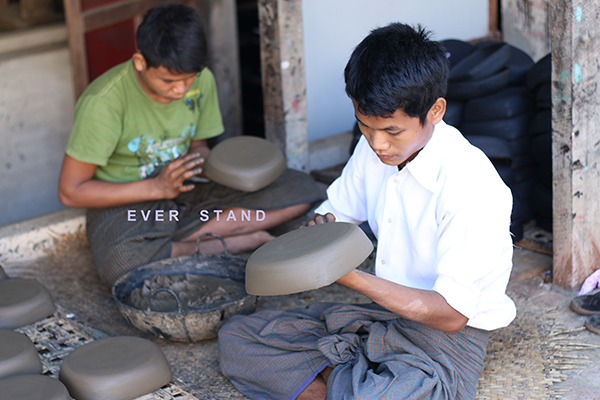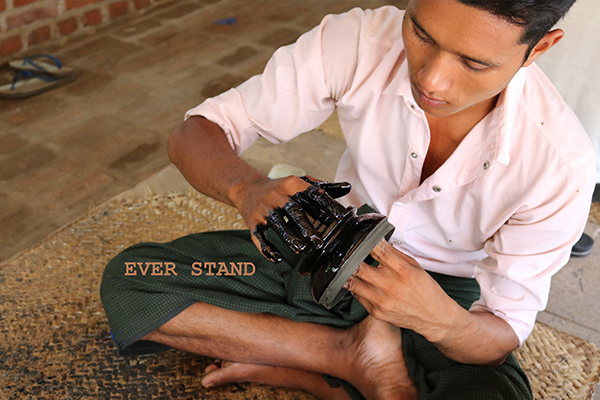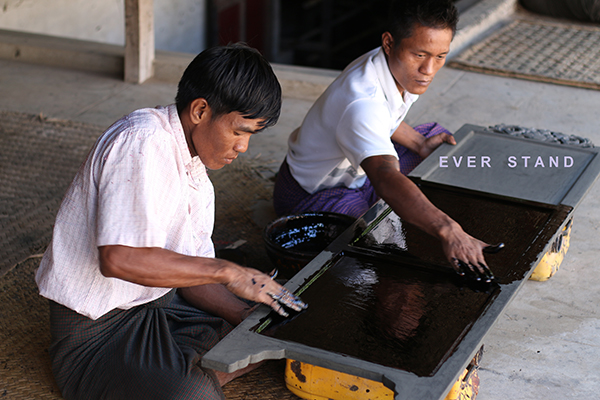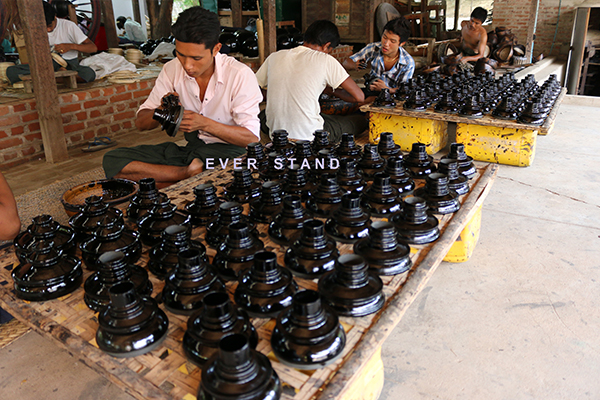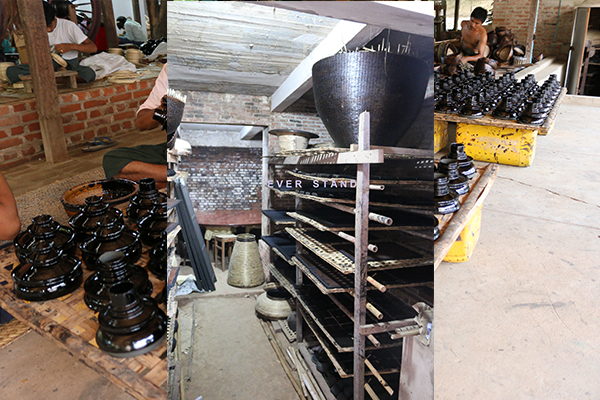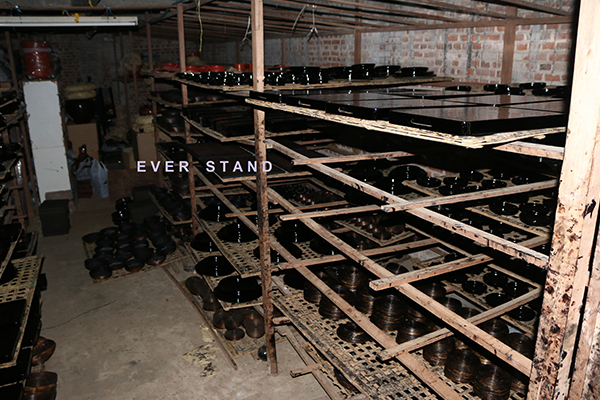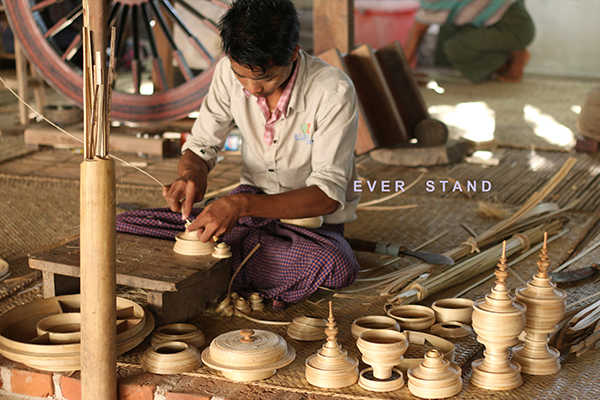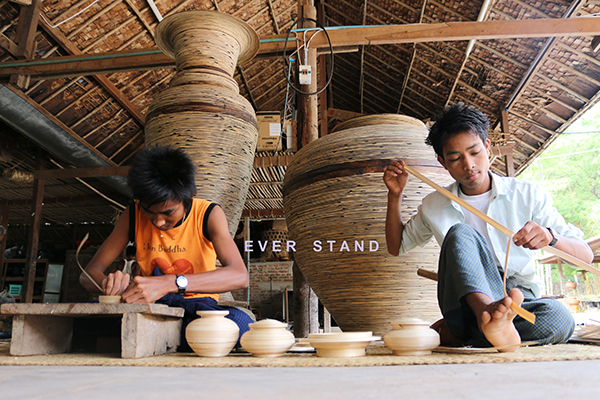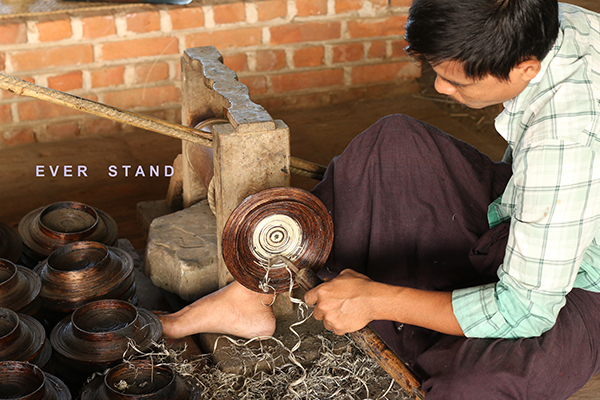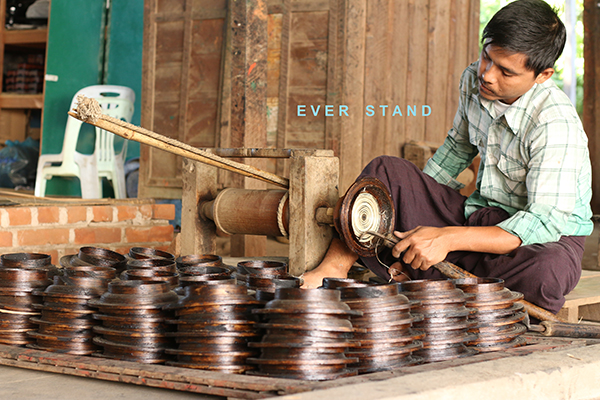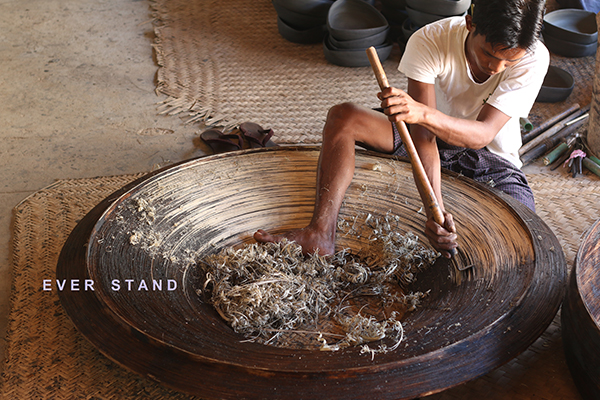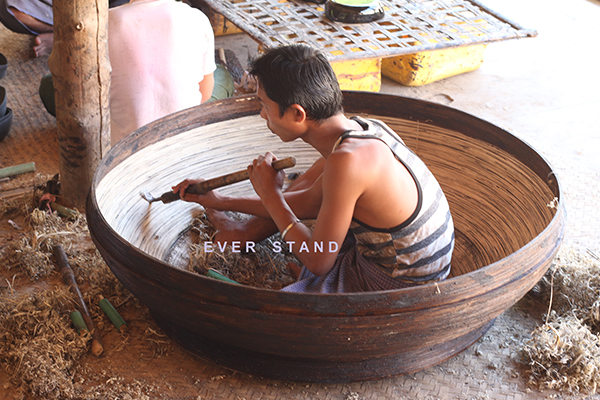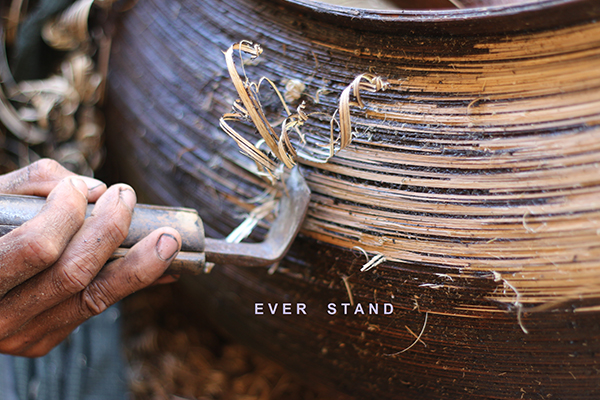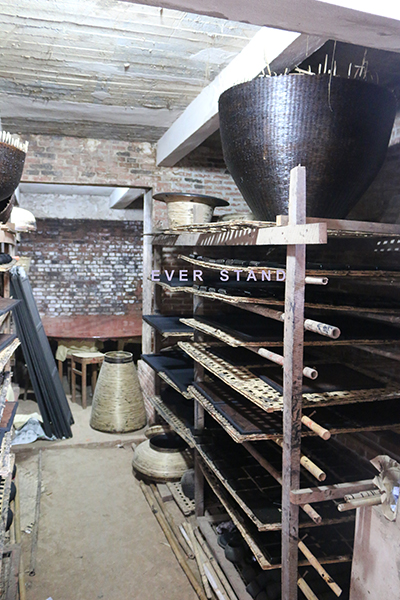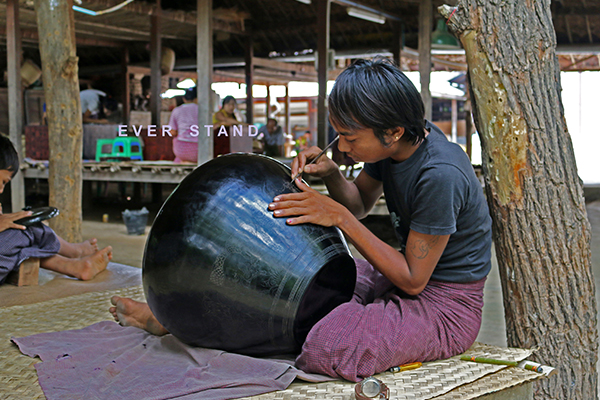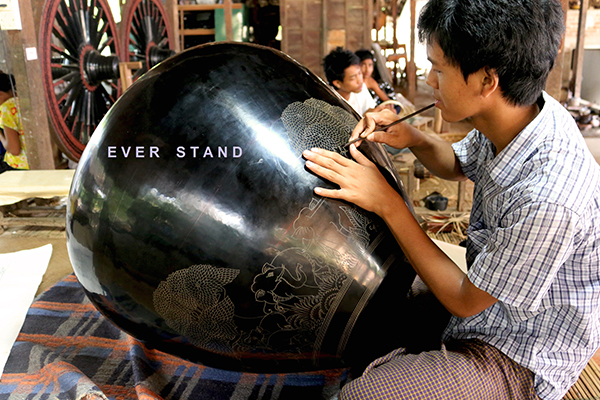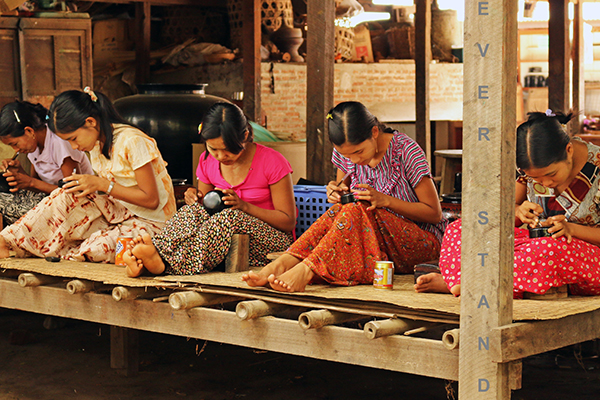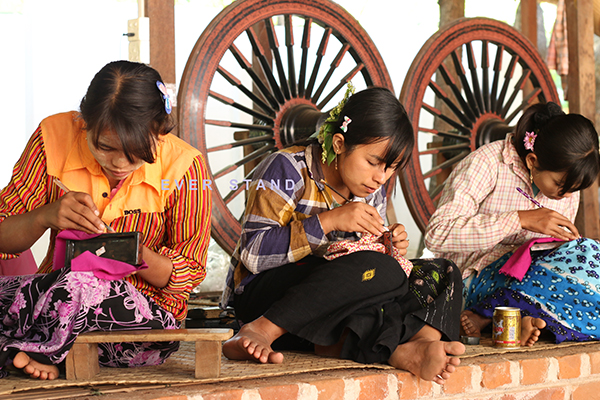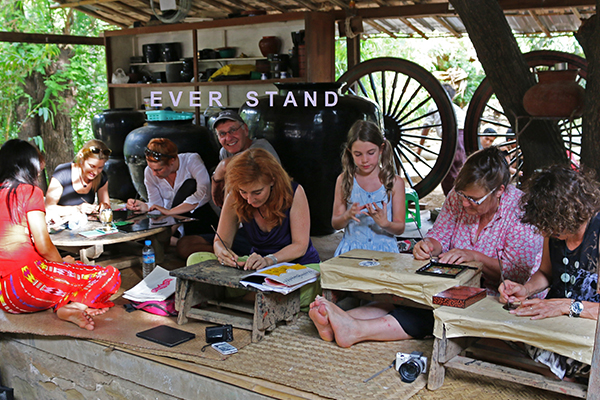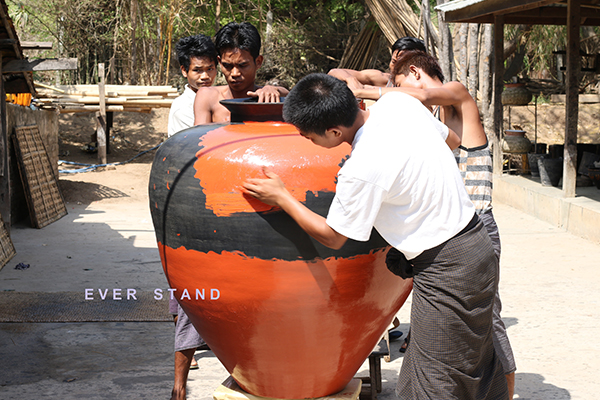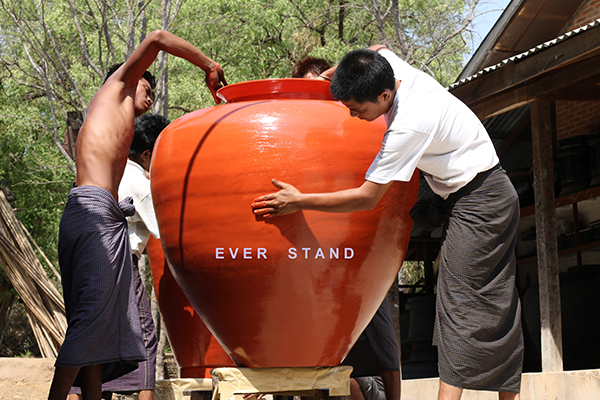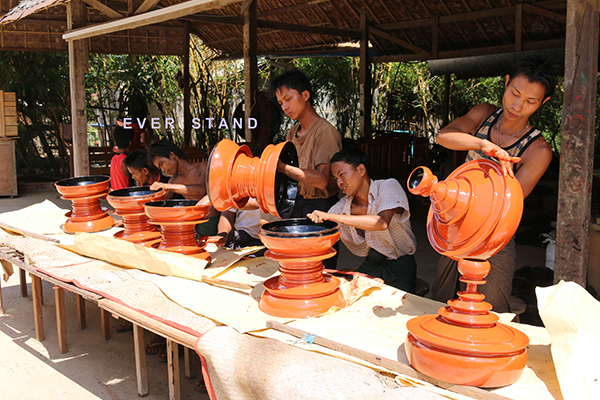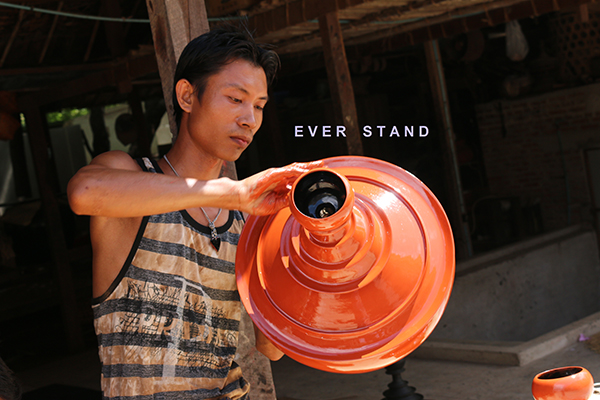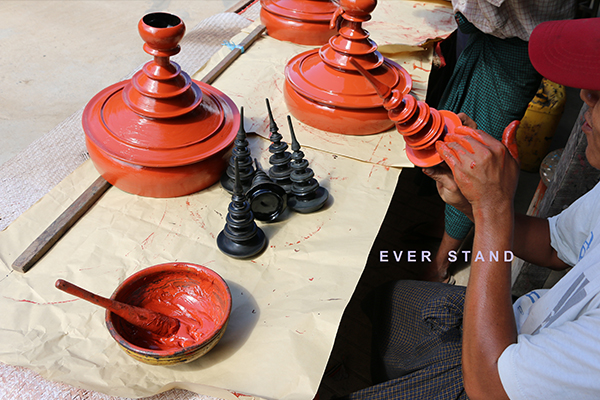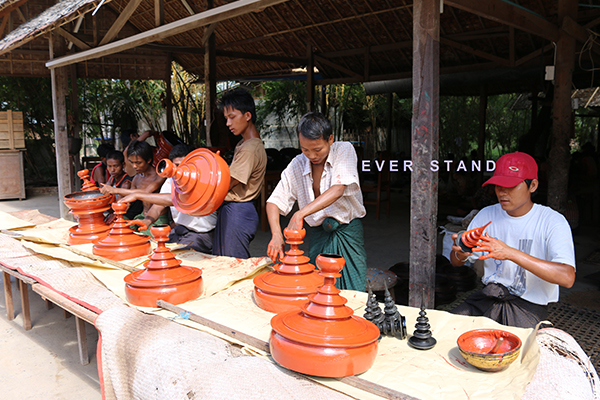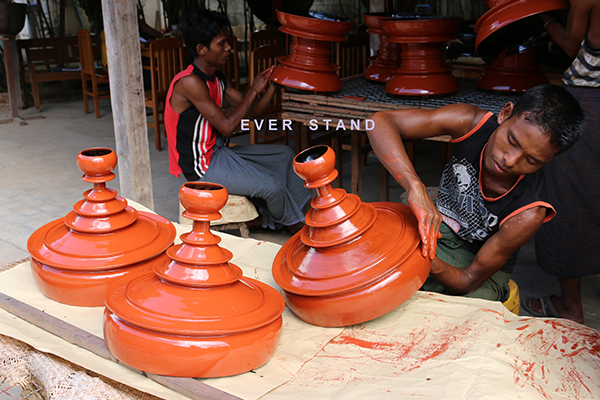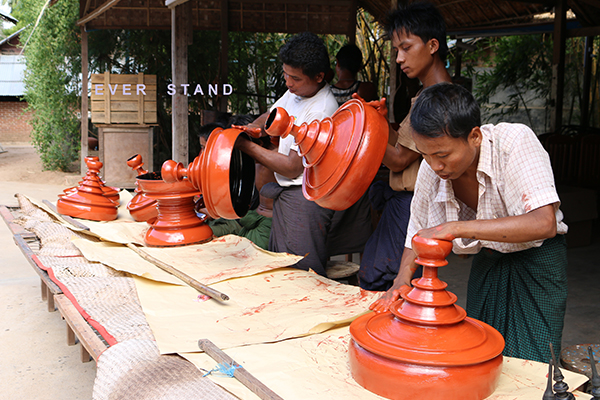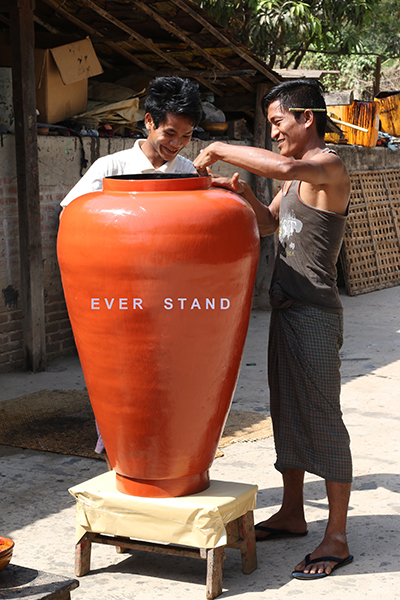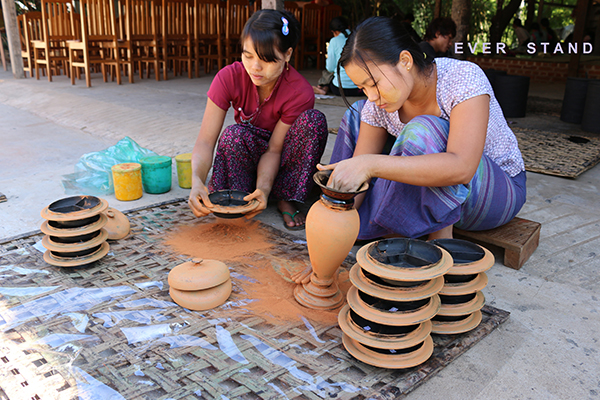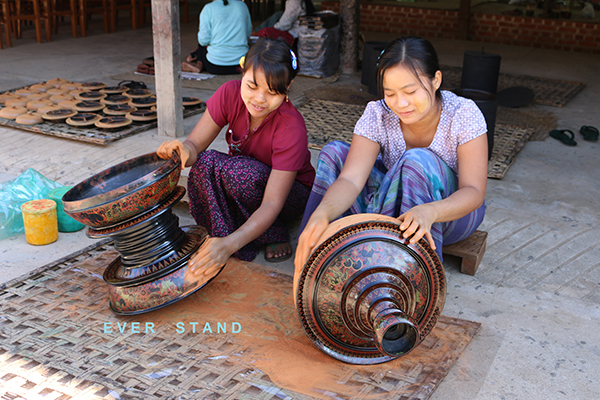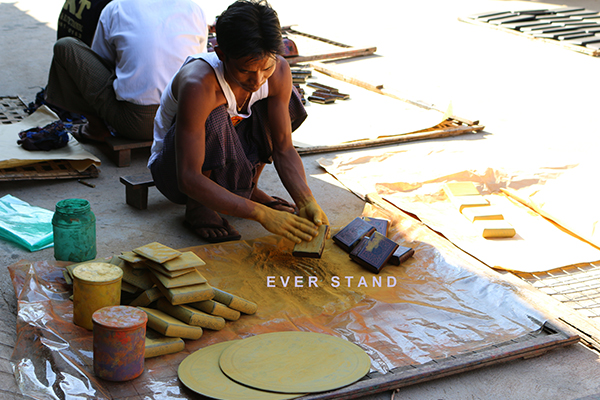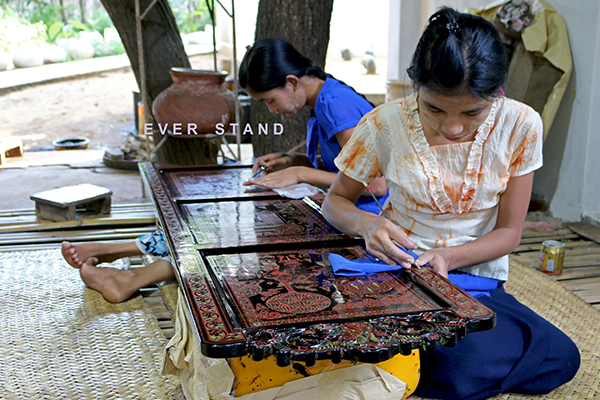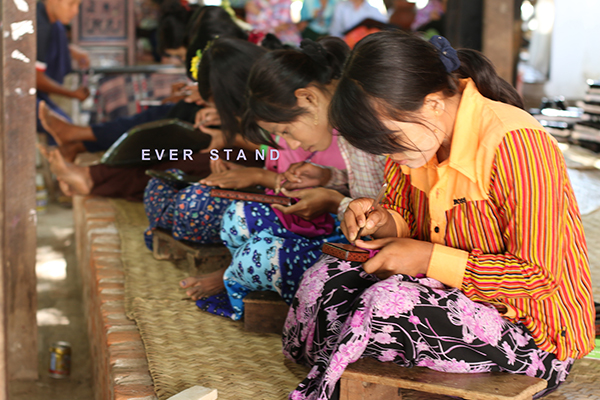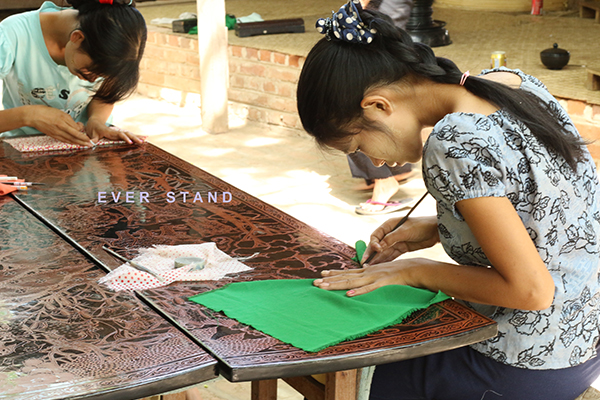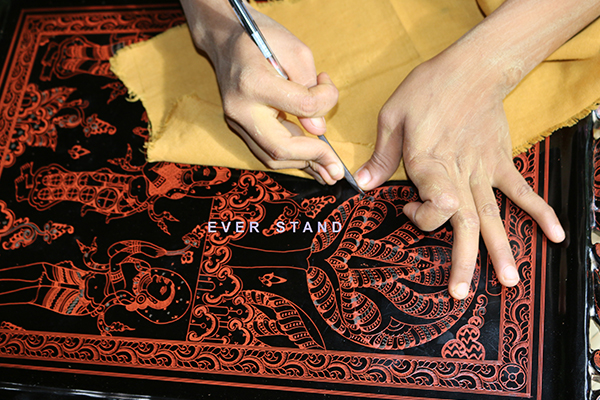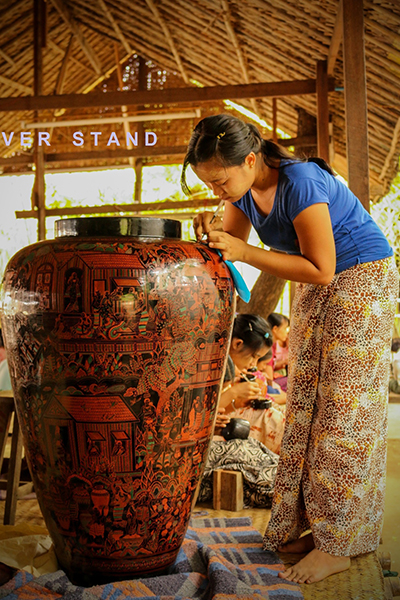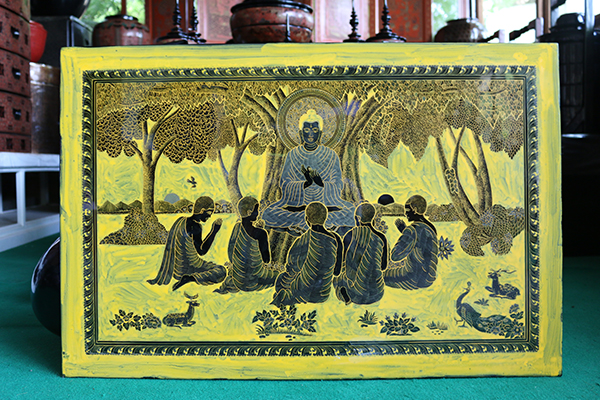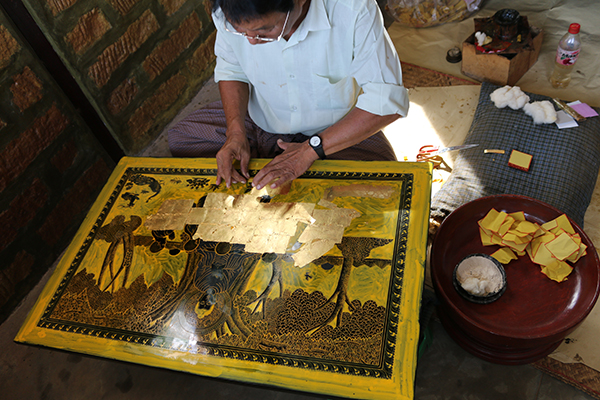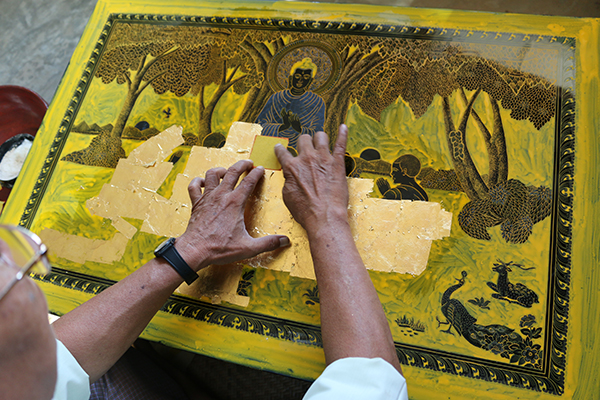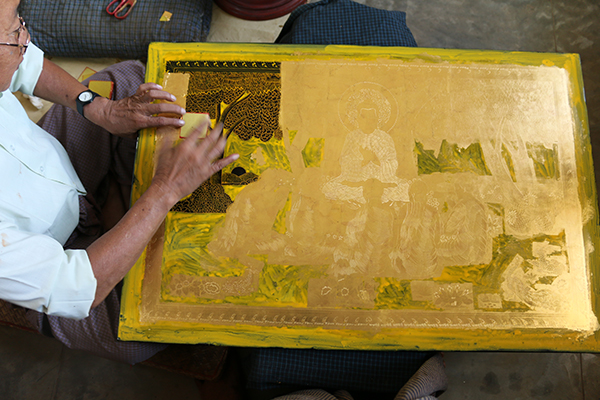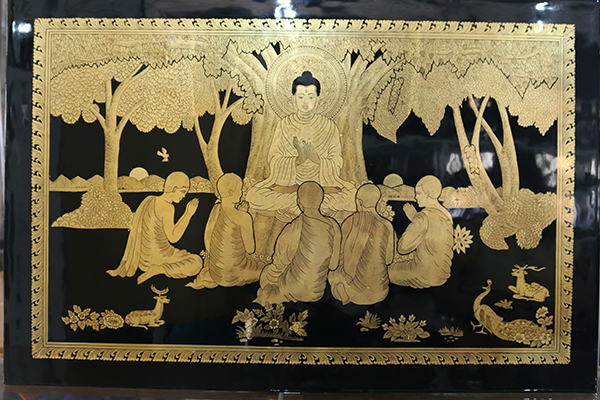The Lacquer Process
What is Lacquer ?
The Lacquer used in Myanmar is called Thit-Si (wood resin), which is the sap of the Melanorrhoea Usitata, a tree native to South-East Asia. The Lacquer tree grows wild up to elevations of 1000 meters on laterite and sandy soils in the drier forest of Myanmar, reaching 15-18 m in height with a girth of 2-3 m when fully grown.
The resin is tapped by making two diagonal notches 20-5 cm long to form V-shaped incisions 5 cm deep in the trunk of the tree. Viscous liquid exuding from the notch slowly trickles into a small bamboo cup which is secured by inserting a sharpened edge into the base of the V. Once a tree has been tapped, this area has to be left for four to five years to heal completely before being tapped again. If a tree is large enough, it is possible to rotate the tapping and thereby produce lacquer continuously.
Base Materials
There are three types of base materials to make myanmar lacquerware.
(1) Bamboo (Tin , Cephalostachyum pergracile)
(2) Horse’s tail
(3) Wood
Four Types of Bamboo Weaving Techniques
(1) Coiled bamboo
(2) Twisted bamboo
(3) Woven Bamboo
(4) Mat bamboo
Preparing the Surface
Once the base object is made, its surface must be prepared for lacquer ornamentation. The object is first sealed with a layer of lacquer and then put in the cellar to dry for three to five days depending upon the weather. After hardening, the object is smoothed and polished with sandpaper or L-shaped knife on a hand operated traditional lathe. Once the object has been polished, a second coating of lacquer is applied. It is made by mixing lacquer with finely sifted sawdust or powdered bone ( tha-yo ) to become harder and stronger. And then the object is put in the cellar again for drying process. The third coating of lacquer is done by missing lacquer with fine clay in order to get smooth lacquer surface. Then the object is coated with twelve-twenty layers of best quality pure lacquer. Each layer takes three to five days for drying process depending on the weather. The entire process including drying periods, can take as long as six-ten months for every amount of items. As a final process, the object is done by dry polishing with ground fossil wood powder without mixing any water to become glossy lacquerware. In order to get matt finishing, the polishing can be done by rubbing charcoal paste with water.
Techniques of Lacquer Decoration (Yun)
Myanmar is famous for a unique style of incised lacquerware decoration called yun. The surface of object is engraved with a fine iron stylus called a ka-nyit. The incisions are then filled with colouring matters.
Etching
The decorative process begins with the etching of a freehand outline of the design into the smooth surface of an object by young men artists. Then it was followed detail etching by young women artists to become more and more beautiful. No stencils or patterns are used.
Applying red colour
Once the primary incisions have been made, a mixture of lacquer and red colour is smeared over the object. All incisions must be completely filled with colouring matter. The object is then left to dry five-ten days in the cellar. When fairly dry, excess pigment is removed by rubbing the object with clay and water. All the red colors will be remained only in the incisions lines. After polishing, the object is returned to the cellar to dry completely.
Etching and applying other colours
Once dry, a coat made from the resin of the neem or tama tree ( Azadirachta indica ) is spread over the object to seal the read colour inside the engraved lines. When the glue has set, new engravings are incised by the women artists. When the new incisions have been made, colouring matter, green is completely filled as before over the entire design and left to dry for a few days in the cellar. The superfluous colour is removed from the unetched surface in the same matter as before, leaving behind red and green in separately incised lines. Green will be remained only in the new engravings. The other colours, yellow and orange, are applied in the same matter.
Finishing
Once the object is completely dry, it is polished with teak charcoal in order to get matt finishing. Glossy or shiny finishing can be done by dry polishing with ground fossil wood powder. It takes six to eight months to complete a particular fine piece of yun lacquerware. The object must be passed through about thirty processes. For very special work production can take up to a year. The price of a lacquerware object varies according to the amount of time and effort invested in decorating it.
Gold Leaf Lacquerware : Shwe Zawa
The production of lacquerware embellished with gold leaf designs is refered to as shwe-zawa work in myanmar. Compared with the painstaking methods required for Yun decoration, shwe-zawa is less time consuming but requires great artistic skill on the part of the craftsman.
The surface of the article to be gold leafed is prepared in exactly the same way as for Yun decoration. The object is formed and receives several successive coats of lacquer until it has acquired a lustrous, smoothly polished surface.
Shwe Zawa Technique
The craftsman, using a pen with a very fine point, carefully paints in free-hand the outline of a design with a water soluble solution of yellow or pigment and neem gum(Azadirachta indica). He paints only those parts of the design that he wishes to retain the original lacquer colour (usually black, but occasionally red or orange). The area to which the gold is to adhere is left unpainted and is a negative of the design. A thin coat of lacquer or varnish is applied to those portions of the design which are to be covered in gold leaf. Thin squares of gold leaf are then spread over the entire area and are carefully pressed into the surface with a swab of cotton wool.
If the gold is to adhere successfully, great care must be taken at this stage to keep the surface free of grease and oil. Even a misplaced fingerprint will be visible on the final design. After drying for twenty to twenty-four hours, but before the lacquer is absolutely hard, the entire object is washed with water. Excess gold leaf applied over the orpiment solution washes away along with superfluous varnish and the yellow colouring matter. This allows the shiny lacquer background to show through. As if by magic, the intricate gold leaf design simultaneously emerges in all its glory. The object is then returned to the cellar to complete the hardening process.


